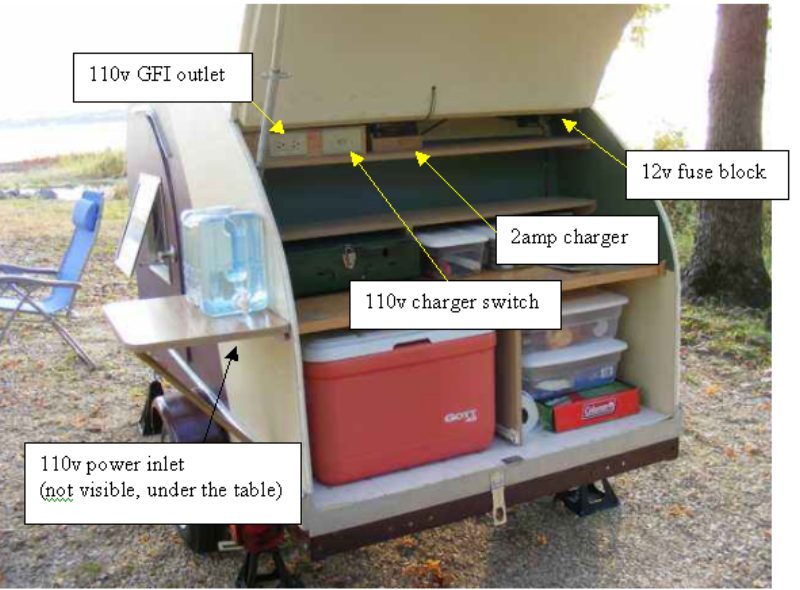Hey Cowboy...this might add to the confusion, I hope not.
You don't need to up the amperage of the battery charger because you aren't running anything off the actual charger. Higher amps would speed up battery charging when that is necessary, but not add to what you can run on the 12volt side.
My TD is wired with both 12 volt and 110. The two types of wiring are separate...the only place the meet is through the charger
Everything I use on a daily basis is 12 volt. There are 12 volt lights and power sockets (cigarette lighter sockets). I use the 12 volt sockets to run a fan, charge cellphone/MP3 player/other stuff and I also have a 300watt power inverter that is used to charge or power my laptop.
The 12v side is powered by a WalMart deep-cycle battery mounted on the tongue and I have a 2amp charger/tender hard-wired into the system for recharging. One side of the charger is connected to the 110v wiring for power and on the other side the charger output wires are connect to the battery through the fuse panel.
On the 110v side I have a power inlet where I plug in the extension cord...that goes to two GFI outlets, one in the cabin and one in the galley. I also wired a switch into the 110v that powers the charger.
My 12v wiring to the interior goes through the roof...the wiring to the battery goes down the back of the galley and runs along the frame up to the battery on the tongue.
In normal camping I don't use much power, primarily just for lights at night and to charge the phone. The deep cycle battery never seems to get low on charge. Last summer I camped at least 2 weekends a month and only charged the battery 2-3 times...and that was mainly just to see if my system worked.
Here's a photo that shows some of these details.

Generic Benroy - built 2007, 4X8, 1175 HF trailer, Structoglass roof and headliner, 12v and 110v electrics with Schumacher charger.






